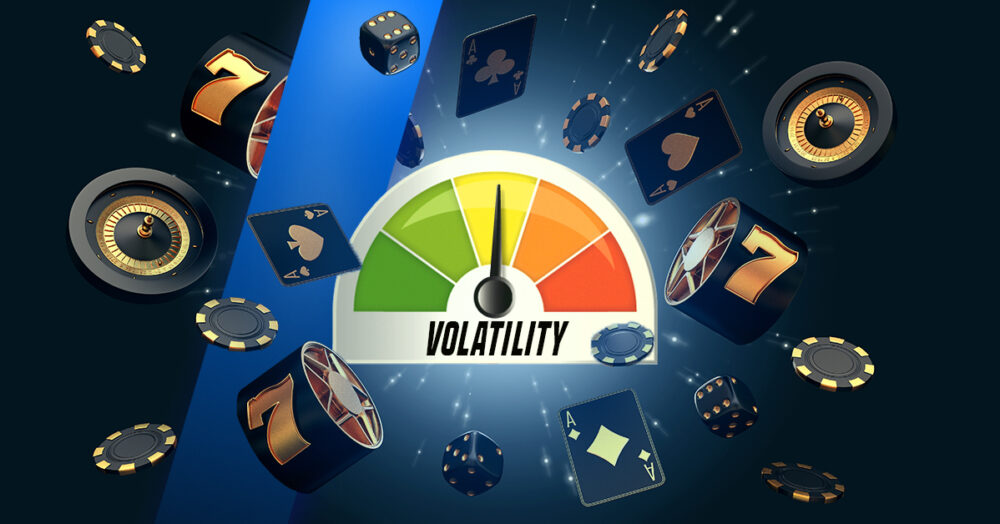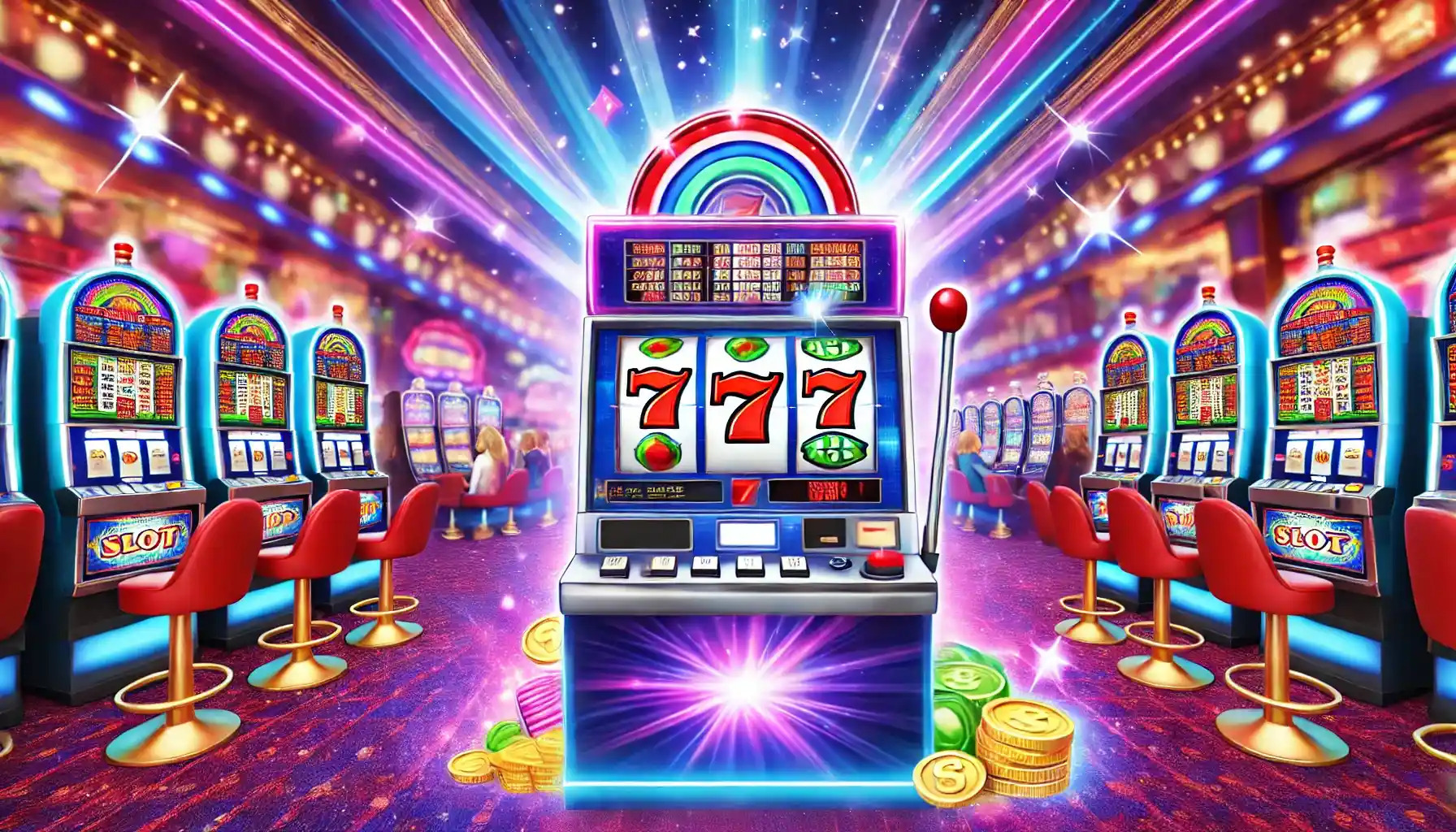
James oversees the content of our site and ensures the quality of every review and news article. With over 10 years of experience in the gambling industry, he has dedicated his career to exploring new trends and market analysis. James strives to make our articles accurate, understandable, and engaging for all readers. In his free time, James enjoys playing poker and has authored several books on poker strategy.
When exploring online casino games, the online casino index “volatility” is crucial for understanding any potential experiences. So, what is volatility in casino? Volatility describes the level of risk that we may incur while playing a game. It tells us how frequently we should get wins and what size they should be.
High volatility meaning in gambling tends to give bigger payouts that show up less frequently; this makes almost every win significant. On the other hand, low-volatility games give smaller, more frequent wins that are quite reassuring for many players.
Such dynamics need to be understood in the making of a good gaming strategy. So, now let us consider in detail this term of gambling.
Low Volatility

The low-volatility slots are ideal for players who want a steady flow of wins without any stress caused by high-risk gaming. With low volatility, the session offers more frequent bonuses and winning combinations. These slots usually have a maximum possible win of less than 1,000 times the bet. That makes them less volatile and less risky than some of their high-volatility counterparts.
This feature is very attractive to beginners or for those who want a relaxing experience. The best thing about low-volatility slots is that one can have all the fun going through different themes and game varieties without being under pressure to chase those big fat jackpots.
Below is presented a list of some popular low-volatility slots and their developers:
- Starburst by NetEnt
- Gems Bonanza by Pragmatic Play
- Blood Suckers by NetEnt
- Joker’s Jewels by Pragmatic Play
- Lucky Lady’s Charm by Novomatic
- The Catfather by Pragmatic Play
We liked these games since they offer frequent small payouts, allowing longer sessions.
We also recommend paying attention to:
Medium Volatility
Medium volatility in casino games balances risk with reward. In contrast to the low volatility slots, the middle volatility can have longer periods of time between wins, but if a win happens, it tends to be more substantial.
Most of these slots have a top win of more than 1,000 times the bet and could be more attractive for some players in search of that little extra oomph but who want to avoid high variance altogether. It is important not to keep our bankroll out of reach, since sessions may have dry spells and losing streaks.
Some popular medium volatility games are at least the following:
- Gonzo’s Quest by NetEnt
- Book of Dead by Play’n GO
- Wolf Gold by Pragmatic Play
- Thunderstruck II by Microgaming
- Reactoonz by Play’n GO
- Rise of Merlin by Play’n GO
We found these volatility-type games as such, which always have the promise of much larger payouts, while their frequency is enough to keep the game enjoyable.
High Volatility
This type of slot gives a possibility for huge wins. These games are exciting because they can pay up to 5,000 and 10,000 times our bet. Still, they are highly volatile. This means that wins come less frequently, and it’s pretty common to have extremely long spells without a payout occurring.
The real excitement about high-volatility games is the fact that they are just so unpredictable. You may hit a big win one moment, only to be followed by 30 spins with no reward at all. These slots often have special features, such as free spins with progressive multipliers or special bonus rounds that considerably raise the payout.
Below, we have gathered some high-volatility popular slots for you:
- Dead or Alive II by NetEnt
- Bonanza by Big Time Gaming
- Book of Shadows by Betsoft
- Dog House Megaways by Pragmatic Play
- Reactoonz 2 by Play’n GO
- Gonzo’s Quest Megaways by Red Tiger Gaming
The Math Behind Volatility

We can better understand how casino games operate if we understand the math underlying volatility. Comparisons that one slot has more volatility percentage than another are frequently made. But there’s a more accurate approach to quantifying volatility.
The volatility index (VI) must be specified by game producers when they submit their slots for regulatory clearance. Variance, a gauge of how much the game’s payouts vary, is the source of this index. For the majority of slots, the variance usually falls between 25 and 225, resulting in a VI of 5 to 15. This facilitates our comprehension of the associated risk.
Table games usually have lower volatility indices, often below 5, while games like Power Ball or Mega Millions, especially when the jackpot is enormous, can have a VI in the tens of thousands. By knowing the volatility index, we can make more informed decisions about the games we choose to play and better manage our expectations regarding wins and losses.
We also recommend paying attention to:
Volatility Indices for Common Casino Games and Bets
Understanding the slot machine volatility index helps us assess the risk associated with different bets. We can categorize these games from least to most volatile, allowing us to make more informed choices based on our risk tolerance.
Here’s a table summarizing the approximate volatility indices for various casino games and bets:
| Game/Bet | Approximate Volatility Index |
| Pai-Gow Poker | 0.8 |
| Even Money Bets (e.g., Roulette Red/Black) | 1.0 |
| Blackjack | 1.1 |
| 2–12-1 Bets (e.g., Roulette columns or dozens) | 1.4 |
| Horn Bet (Craps) | 2.1 |
| Caribbean Stud Poker | 2.2 |
| 8–18-1 Bets (e.g., Roulette corners) | 2.8 |
| Video Poker (Jacks or Better) | 4.8 |
| 35–135-1 Bets (e.g., Roulette numbers) | 5.8 |
| Online Slots | 5 to 15 |
Calculating Volatility Index (Advanced)
Calculating the Volatility Index (VI) of a casino game can seem complex, but we can break it down into manageable steps. Here’s how we do it:
1 Step: Get the payout squared away
Start with the highest payout of the game, including the original stake. For example, if the payout for an 8-1 bet is $9, squaring that gives us 9²=81.
2 Step: Apply the probability
Next, we multiply the squared payout by the probability of achieving that result. If the chance of winning that 8-1 bet is 5%, we calculate 81×0.05=4.05.
3 Step: Proceed for each award
We repeat this process for every prize available. Suppose there’s a 4-1 prize that’s 10% likely to hit. For that, we would calculate (4+1)²×0.10=2.5.
Adding these results together gives us 4.05+2.5=6.55.
4 Step: Minus the RTP square
Now we need to find the variance. We subtract the square of the RTP from the total. If the RTP is 95%, we square it to get 0.9025, so our variance calculation becomes 6.55−0.9025=5.6475.
Step 5: Calculating the probability
Finally, to get the VI, we take the square root of the variance. In our example, √5.6475≈2.376.

James oversees the content of our site and ensures the quality of every review and news article. With over 10 years of experience in the gambling industry, he has dedicated his career to exploring new trends and market analysis. James strives to make our articles accurate, understandable, and engaging for all readers. In his free time, James enjoys playing poker and has authored several books on poker strategy.

No comments yet. Be the first to comment!